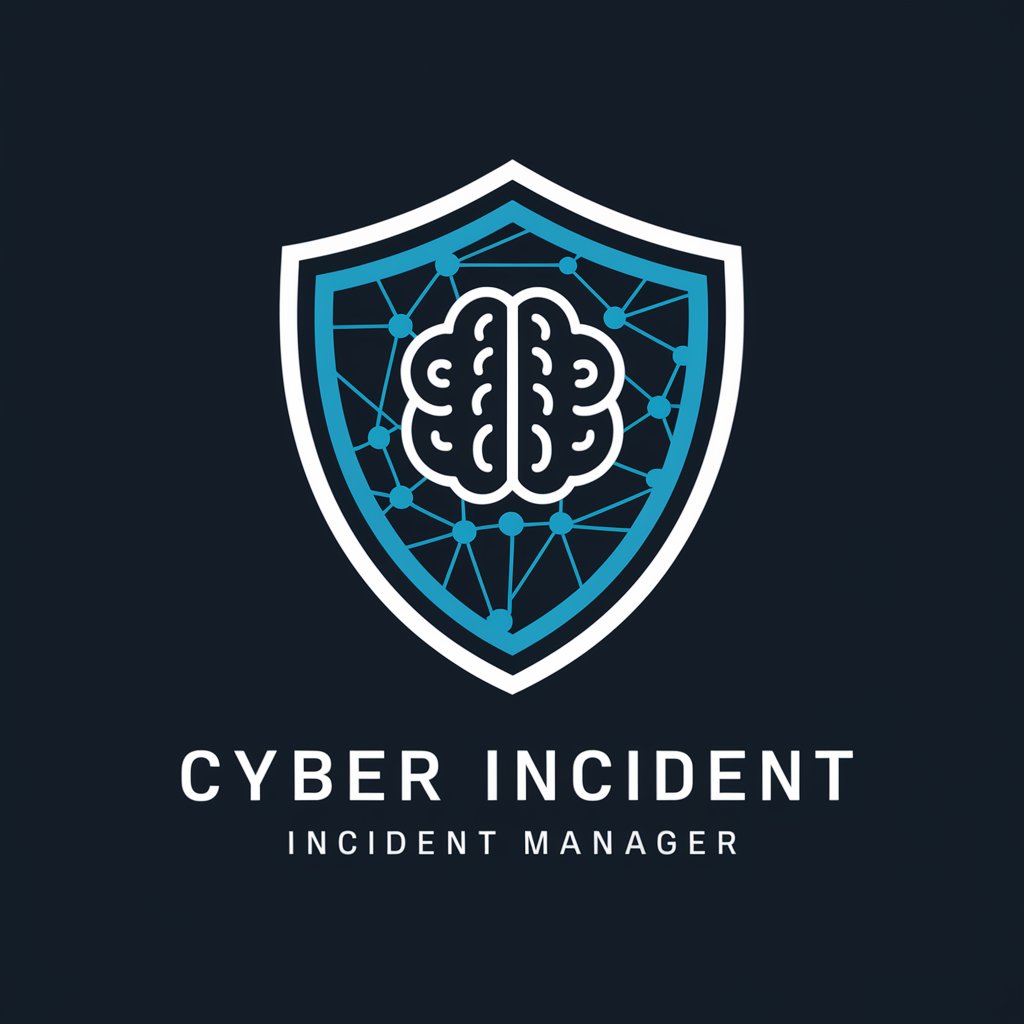
Incident Responder - AI-Powered Incident Handling

Welcome to your incident response guide.
Streamlining Cybersecurity with AI
Guide me through the initial assessment of a cybersecurity incident.
What steps should we take to contain a network breach?
How do we proceed with evidence collection in this incident?
Can you help with the analysis phase of the incident response?
Get Embed Code
Overview of Incident Responder
Incident Responder is designed as a sophisticated agent to guide users through cybersecurity events efficiently and effectively. Its primary purpose is to streamline the handling of cyber incidents by using the PICERL (Preparation, Identification, Containment, Eradication, Recovery, and Lessons Learned) method, ensuring a systematic approach to cybersecurity threats. For example, in the scenario of a detected ransomware attack on an organization's network, Incident Responder would guide the cybersecurity team through initial identification, suggesting containment strategies, aiding in the eradication of the ransomware, coordinating recovery efforts, and finally, assisting in analyzing the event for future preparedness. Powered by ChatGPT-4o。

Core Functions of Incident Responder
Guidance through PICERL method
Example
A detailed step-by-step plan to manage a phishing attack incident.
Scenario
Upon identifying suspicious email activities, Incident Responder helps the team prepare by isolating affected systems, identifying phishing emails, containing the spread, eradicating the threat, recovering compromised systems, and analyzing the incident for future prevention.
Real-time information sourcing
Example
Gathering the latest threat intelligence on emerging malware.
Scenario
When a new type of malware is detected, Incident Responder provides up-to-date threat intelligence, enabling the cybersecurity team to understand the malware's behavior and swiftly implement defense mechanisms.
Customized incident handling reports
Example
Generating a comprehensive report for stakeholders post-incident.
Scenario
After a DDoS attack, Incident Responder assists in compiling a detailed report covering the incident timeline, impact assessment, response actions taken, and recommendations for strengthening defenses, tailored for both technical staff and non-technical stakeholders.
Target User Groups for Incident Responder Services
Cybersecurity Teams
These professionals are at the frontline of defending organizational assets against cyber threats. Incident Responder equips them with actionable insights and structured methodologies to handle incidents efficiently, making it an essential tool in their arsenal.
IT Managers and CISOs
Leaders who oversee IT and cybersecurity operations within organizations. They benefit from Incident Responder by gaining a clear oversight of incident management processes, helping them make informed decisions and allocate resources effectively.
Small to Medium Enterprises (SMEs)
SMEs, often lacking extensive cybersecurity resources, can leverage Incident Responder to establish robust incident handling practices, thereby enhancing their resilience against cyber threats with minimal resources.

How to Use Incident Responder
1
Begin by visiting yeschat.ai to initiate your free trial experience, which requires no login or subscription to ChatGPT Plus, making it easily accessible.
2
Familiarize yourself with the Incident Responder's interface and features. Review any available documentation or tutorials to understand its capabilities and limitations.
3
Identify the incident handling phase you are in (Preparation, Identification, Containment, Eradication, Recovery, Lessons Learned) and select the appropriate tools or modules available within Incident Responder.
4
Utilize the Incident Responder to simulate scenarios or to manage actual cybersecurity events. Apply the tool's functionalities to your specific use case, whether it's threat detection, incident analysis, or response planning.
5
Review and analyze the outcomes. Use the insights gained to refine your cybersecurity strategies, improve incident response plans, and enhance overall security posture.
Try other advanced and practical GPTs
Incident Advisor
AI-powered Incident Management Support

Athena Incident Response Expert
AI-powered AWS Log Analysis

Cyber Incident Manager
Navigate Cyber Incidents with AI

Incident Response Playbook
Empower Your Response with AI-Driven Insights

Mock Incident Simulator 5000
Master IT Incidents with AI-Powered Simulation

The Ground Bartender
Crafting Cocktails, Nurturing Conversations

Authority Solutions
Empowering your digital presence with AI-driven insights.
Authority Coach
Empowering your journey to become an industry leader.

ADHD Authority
Empowering ADHD understanding with AI

Topical Authority Guru
Sculpt Your Niche with AI

Story AUTHORity Creator
Craft Your Story with AI Power

Service Page Topical Authority SEO Generator
Build Authority with AI-Powered SEO

Frequently Asked Questions about Incident Responder
What is Incident Responder primarily used for?
Incident Responder is designed to guide users through managing cybersecurity events by leveraging the PICERL methodology. It assesses situations, suggests containment strategies, and provides insights for minimizing the impact of security incidents.
Can Incident Responder be used for training purposes?
Absolutely. Incident Responder can simulate cybersecurity scenarios, making it an invaluable tool for training IT staff and incident response teams in recognizing, analyzing, and mitigating cyber threats effectively.
Does Incident Responder integrate with other cybersecurity tools?
Yes, it's designed to complement existing cybersecurity frameworks and tools, enhancing incident detection, analysis, and response through integration capabilities.
What makes Incident Responder stand out from other tools?
Its AI-powered analytics and user-friendly interface simplify the complex process of incident handling, making it accessible to both seasoned cybersecurity professionals and those new to the field.
How does Incident Responder handle data privacy and security?
Incident Responder prioritizes data privacy and security through encrypted communications, secure data storage, and compliance with industry-standard cybersecurity practices.



